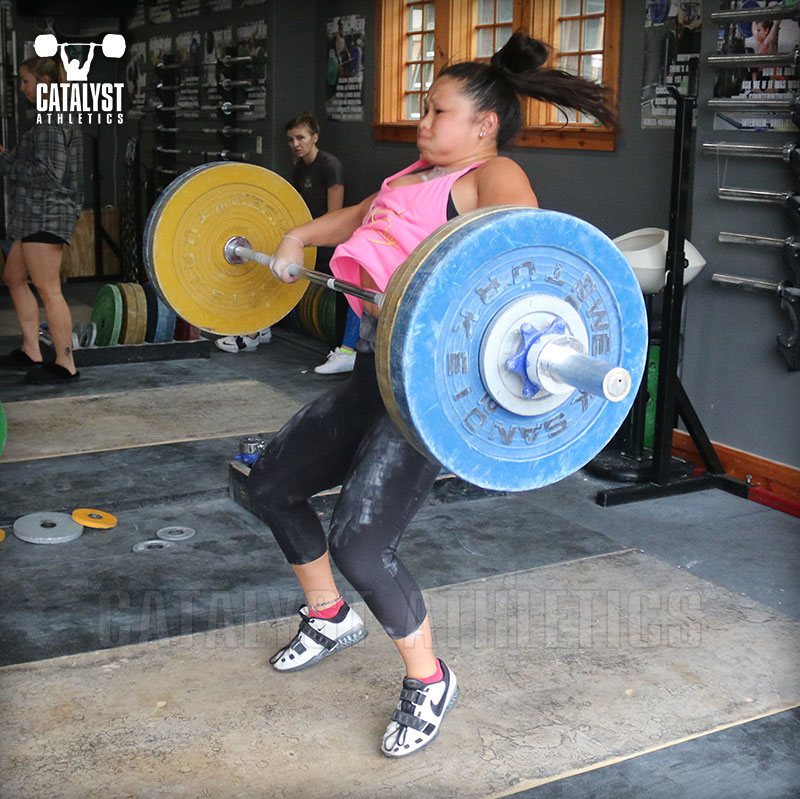Articles
The Right Way, The Wrong Way, and That Way
November 26 2019

November 26 2019

Everyone wants right and wrong, simple dichotomies, yes or no answers… but that’s not really how weightlifting works. I’m bombarded with what-about-isms on most of the instructional content I post. As I say ad nauseam, there are exceptions to every rule of both weightlifting technique and program design. Weightlifters are people, and people are a mess.
You’re going to continue to struggle making progress in the sport of weightlifting if you’re focused on exceptions, anomalies and oddities. Yes, you’re weird, but not in the same way as the lifter you’re infatuated with.
Like any other intellectual pursuit, the effective approach is typically going to be based on finding the commonalities. The elements shared most are what point to the principles underlying what we’re all doing, and those principles are what allow us to make sensible decisions regarding things like snatch and clean & jerk technique when it appears with a cursory look that everyone does it differently.
Fortunately, we can still broadly categorize many things as right or wrong. Keeping the bar close to the body is right; letting it move away is wrong.
We can also pretty easily find what works best for most people to make these right things happen, and what typically causes the wrong things to happen instead. Keeping the bar close to the legs prior to hip contact and driving correctly with the legs helps keep the bar close in the snatch; allowing the bar to move away from the legs prior to contact and extending the hips horizontally rather than in concert with vertical leg drive pushes the bar away.
We can argue all day long with no resolution about the details. My response in these cases is usually pretty simple: Does this thing cause the lift to be as effective as possible or not? In other words, does this thing support the known principles guiding successful lifting, or does it violate them? The former is “right” and the latter is “wrong.”
The next question is also pretty straightforward: does this thing work for many people, or only for one or a handful? It should be very obvious based on the answer whether or not it’s something you should be doing. I don’t care how cool it looks when your favorite lifter does it—you don’t look cool missing lifts trying to mimic it.
I’ve said it many times and I’ll keep saying it: start with the textbook. Learn the textbook technique. Develop proficiency with it. Only then are you in a position to even consider modifications. Prior to this stage, you’re just flailing around and incapable of genuinely evaluating how something works for you… because you can’t even do it correctly yet.
Learn the right way. Understand the wrong way. And eventually, once you reach proficiency, feel free to experiment with that way… just please don’t fill up my YouTube comments about how it’s The Way.
You’re going to continue to struggle making progress in the sport of weightlifting if you’re focused on exceptions, anomalies and oddities. Yes, you’re weird, but not in the same way as the lifter you’re infatuated with.
Like any other intellectual pursuit, the effective approach is typically going to be based on finding the commonalities. The elements shared most are what point to the principles underlying what we’re all doing, and those principles are what allow us to make sensible decisions regarding things like snatch and clean & jerk technique when it appears with a cursory look that everyone does it differently.
Fortunately, we can still broadly categorize many things as right or wrong. Keeping the bar close to the body is right; letting it move away is wrong.
We can also pretty easily find what works best for most people to make these right things happen, and what typically causes the wrong things to happen instead. Keeping the bar close to the legs prior to hip contact and driving correctly with the legs helps keep the bar close in the snatch; allowing the bar to move away from the legs prior to contact and extending the hips horizontally rather than in concert with vertical leg drive pushes the bar away.
We can argue all day long with no resolution about the details. My response in these cases is usually pretty simple: Does this thing cause the lift to be as effective as possible or not? In other words, does this thing support the known principles guiding successful lifting, or does it violate them? The former is “right” and the latter is “wrong.”
The next question is also pretty straightforward: does this thing work for many people, or only for one or a handful? It should be very obvious based on the answer whether or not it’s something you should be doing. I don’t care how cool it looks when your favorite lifter does it—you don’t look cool missing lifts trying to mimic it.
I’ve said it many times and I’ll keep saying it: start with the textbook. Learn the textbook technique. Develop proficiency with it. Only then are you in a position to even consider modifications. Prior to this stage, you’re just flailing around and incapable of genuinely evaluating how something works for you… because you can’t even do it correctly yet.
Learn the right way. Understand the wrong way. And eventually, once you reach proficiency, feel free to experiment with that way… just please don’t fill up my YouTube comments about how it’s The Way.
